
Chromodorididae, or chromodorids, are a taxonomic family of colourful sea slugs; dorid nudibranchs, marine gastropod mollusks in the superfamily Doridoidea. “Chromodorid nudibranchs are among the most gorgeously coloured of all animals.” The over 360 described species are primarily found in tropical and subtropical waters, as members of coral reef communities, specifically associated with their sponge prey. The chromodorids are the most speciose family of opisthobranchs. They range in size from <10mm to over 30 cm, although most species are approximately 15–30 mm in size.

Ardeadoris cruenta is a species of very colourful sea slug, a dorid nudibranch, a marine gastropod mollusc in the family Chromodorididae. Its name is derived from the feminine form of the Latin word cruentus, which means "stained with blood" and is a reference to the red spots on its upper dorsum. It was transferred to the genus Ardeadoris on the basis of DNA evidence.

Ardeadoris is a genus of sea slugs, specifically dorid nudibranchs, shell-less marine gastropod mollusks in the family Chromodorididae.

Doriprismatica atromarginata is a species of sea slug. It is a dorid nudibranch, a shell-less marine gastropod mollusk in the family Chromodorididae.

Ardeadoris averni is a species of sea slug, a dorid nudibranch, a shell-less marine gastropod mollusc in the family Chromodorididae. It was transferred to the genus Ardeadoris on the basis of DNA evidence.
Ardeadoris carlsoni is a species of sea slug, a dorid nudibranch, a shell-less marine gastropod mollusc in the family Chromodorididae. It was transferred to the genus Ardeadoris on the basis of DNA evidence.
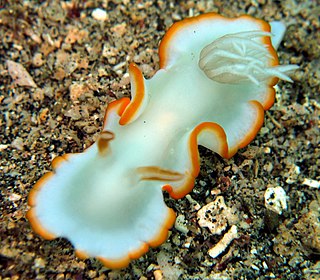
Ardeadoris electra is a species of sea slug, a dorid nudibranch, a shell-less marine gastropod mollusc in the family Chromodorididae. It was transferred to the genus Ardeadoris on the basis of DNA evidence.
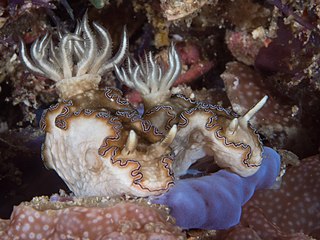
Doriprismatica paladentata is a species of sea slug, a dorid nudibranch, a shell-less marine gastropod mollusk in the family Chromodorididae.
Ardeadoris poliahu is a species of sea slug, a dorid nudibranch, a shell-less marine gastropod mollusk in the family Chromodorididae.
Doriprismatica plumbea is a species of sea slug, a dorid nudibranch, a shell-less marine gastropod mollusk in the family Chromodorididae.
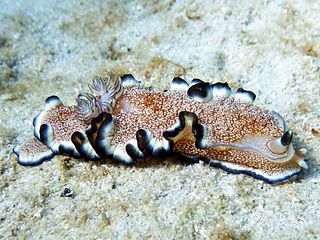
Ardeadoris pullata is a species of sea slug, a dorid nudibranch, a shell-less marine gastropod mollusk in the family Chromodorididae.
Ardeadoris rubroannulata is a species of sea slug, a dorid nudibranch, a shell-less marine gastropod mollusk in the family Chromodorididae.
Doriprismatica sibogae is a species of sea slug, a dorid nudibranch, a shell-less marine gastropod mollusk in the family Chromodorididae.
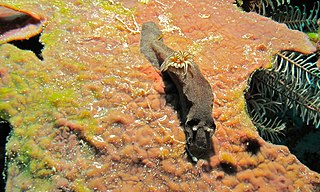
Doriprismatica stellata is a species of sea slug, a dorid nudibranch, a shell-less marine gastropod mollusk in the family Chromodorididae.
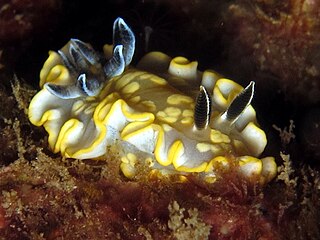
Ardeadoris tomsmithi is a species of sea slug, a dorid nudibranch, a shell-less marine gastropod mollusk in the family Chromodorididae.
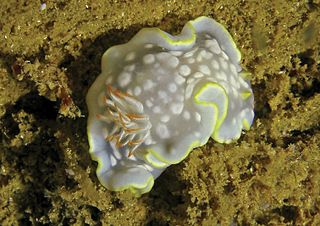
Ardeadoris undaurum is a species of sea slug, a dorid nudibranch, a shell-less marine gastropod mollusk in the family Chromodorididae.

Mexichromis pusilla is a species of sea slug or dorid nudibranch, a marine gastropod mollusk in the family Chromodorididae.
Mexichromis similaris is a species of sea slug or dorid nudibranch, a marine gastropod mollusk in the family Chromodorididae.
Mexichromis lemniscata is a species of colourful sea slug or dorid nudibranch, a marine gastropod mollusk in the family Chromodorididae.

Ardeadoris angustolutea is a species of colourful sea slug, a dorid nudibranch, a shell-less marine gastropod mollusc in the family Chromodorididae. It was transferred to the genus Ardeadoris on the basis of DNA evidence.













